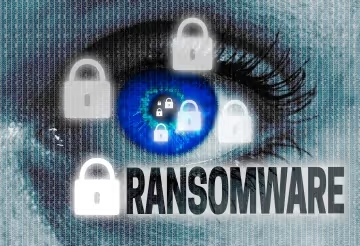
Ransomware Attacks are back with a vengeance -this time attacking healthcare facilities who have critical patient data which they cannot afford to lose. Hospitals need patient data quickly without which patient care can become difficult or nearly impossible. Since all patient data is now stored on computers, losing this data is not an option. In just the past few months, the ransomware has attacked millions of computers, locking out their users for days. Recently, computers belonging to Hollywood Presbyterian Medical Center in Los Angeles, Med-Star Health in DC and Methodist Hospital in Henderson, Kentucky were struck; Hollywood hospital had to pay close to $20,000 in bitcoins to unlock the computers.The people who have created this virus are one step ahead- they ask for payment usually in bitcoins so tracing can be difficult.Ransomware is a lucrative business for criminals, and the attackers have become very sophisticated in developing the cryptware, which encrypts files on a machine using a private key that only the attackers possess, instead of simply locking the computer or keyboard.In such situations, can technology help hospitals and clinics still care for the sick and wounded when they have no access to their EMR? The Smartphone is a modern technology marvel, spearheaded by Apple with Google and the rest following, that could help compensate for the high ratio of patients to healthcare personnel during ransomware attacks.
Unlike desktop computers that require a continuous power supply, smartphones are compact packages of computing, camera, and communication, powered by a battery. If a hospital's network is shut down due to the ransomware attack, doctors and nurses can still communicate using mobile networks. Care coordination always starts with communication. Face to face communication is the best in disasters to quickly triage patients. However, physicians and particularly specialists are in such high demand that many neighborhood hospitals cannot reach them. They just cannot be in so many places at the same time. The best solution in such situations is a tool that will facilitate communication between physicians and nurses by providing quick access to patient health information regardless of their location.

Unlike phone calls, mobile texting (SMS) provides the ability to participate in multiple conversations with multiple nurses at the same time. SMS with attachments is a godsend to healthcare. A nurse could take a picture of a wound as well as a picture of the medical record and send it to a waiting physician at the other end in seconds. This reduces care coordination time and helps reduce the serious adverse patient events that can occur due to poor communication. EMRs and HIEs are excellent tools for care continuum. However, these tend to overwhelm providers especially during times of disasters when there is a surge in the patient population. SMS provides the necessary help when doctors need it the most.
All of this is great for providing on the spot communication; however, the big elephant in the room is HIPAA privacy and security rules and the Joint Commission directive on SMS. These prevent providers from communicating over SMS any Protected Health Information (PHI) which includes pretty much anything related to the patient. SMS is deemed not secure because there is no authentication, encryption, and audibility of messages exchanged. Smartphone apps such as Qliq complies with regulations and provides the most natural form of care coordination - texting with attachments.
